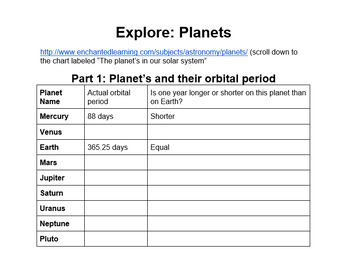Scale model of solar system WebQuest and project!
- Zip
- Webquests
Products in this Bundle (2)
Description
WebQuest: As a 6th grade teacher trying to explain scale models using "millions of miles," it was tricky to help students visualize this. Other TPT products were a bit beyond what my students were capable of doing independently so I created this based off the 5 E's.
First students will explore by researching different aspects of the planets such as their orbital periods, distance from the sun in miles, and ordering the planets by size. Then students will answer conclusion questions.
Project: Next students will explain what they learned by creating a scale model of the solar system from miles to centimeters using the constant 93,000,000 miles (rounded from 92.96 million miles which is Earth's distance from the sun) once students have completed the math they were create a poster and measure the relative distances from the sun with their scale models and label where each planet would fall.





